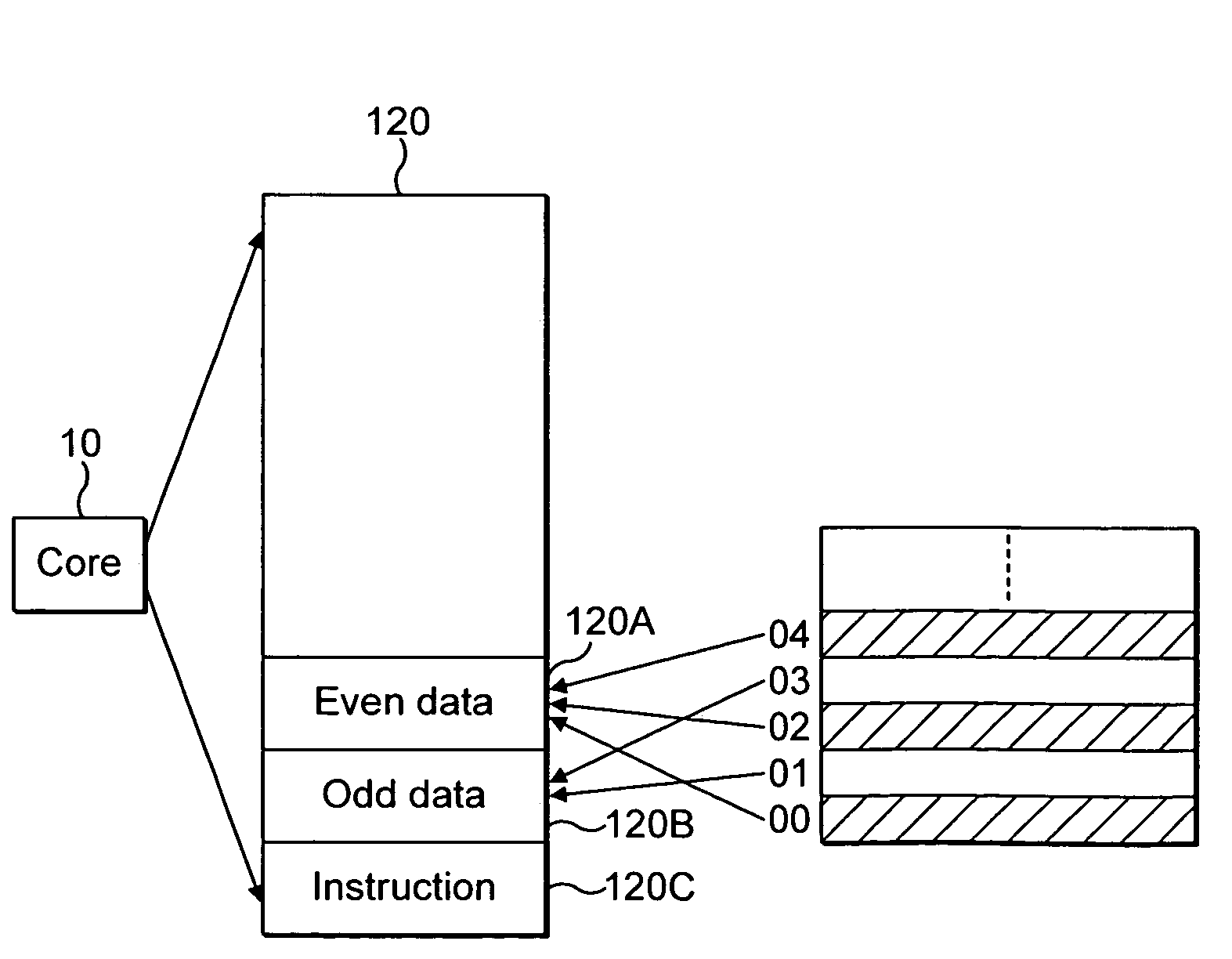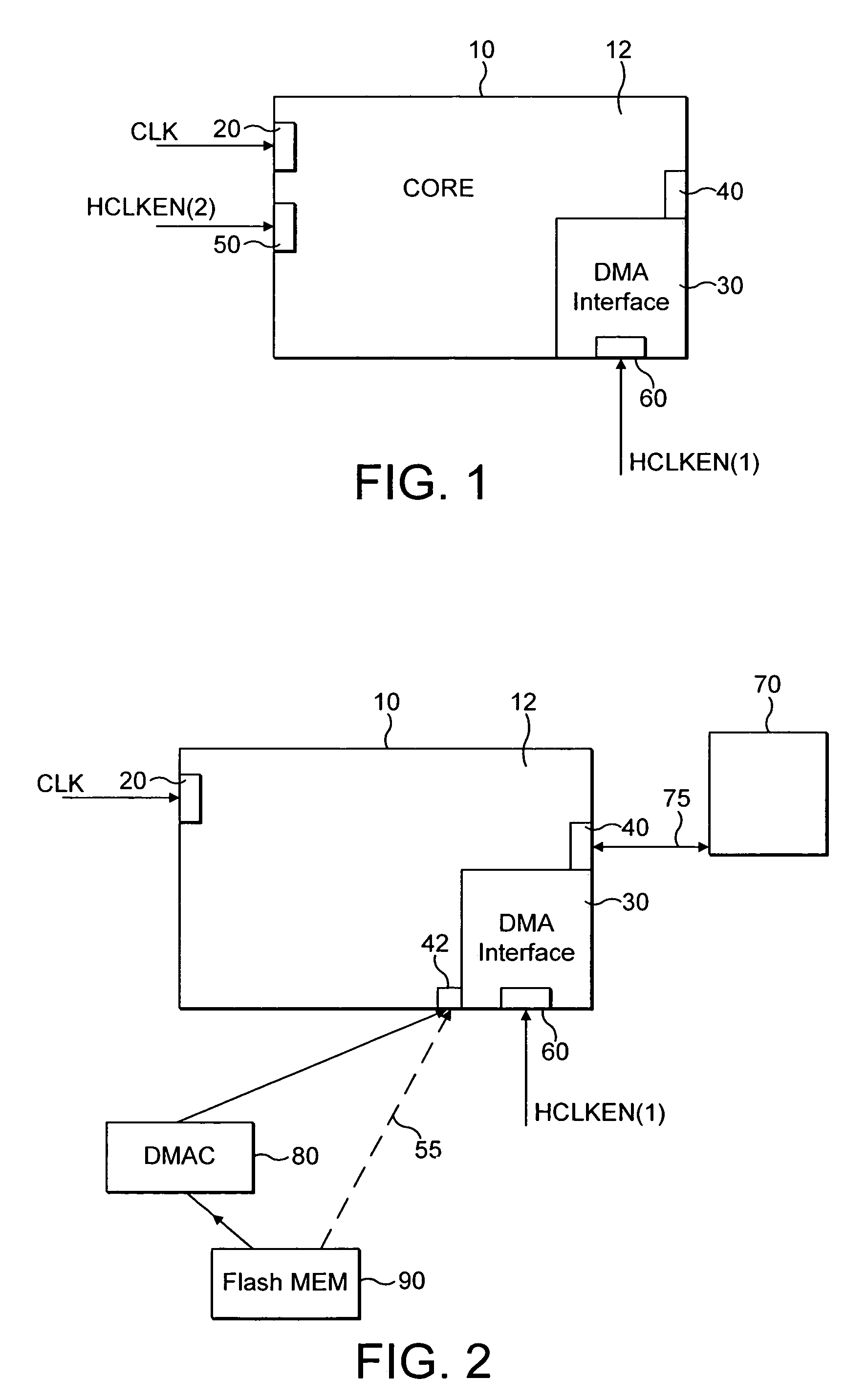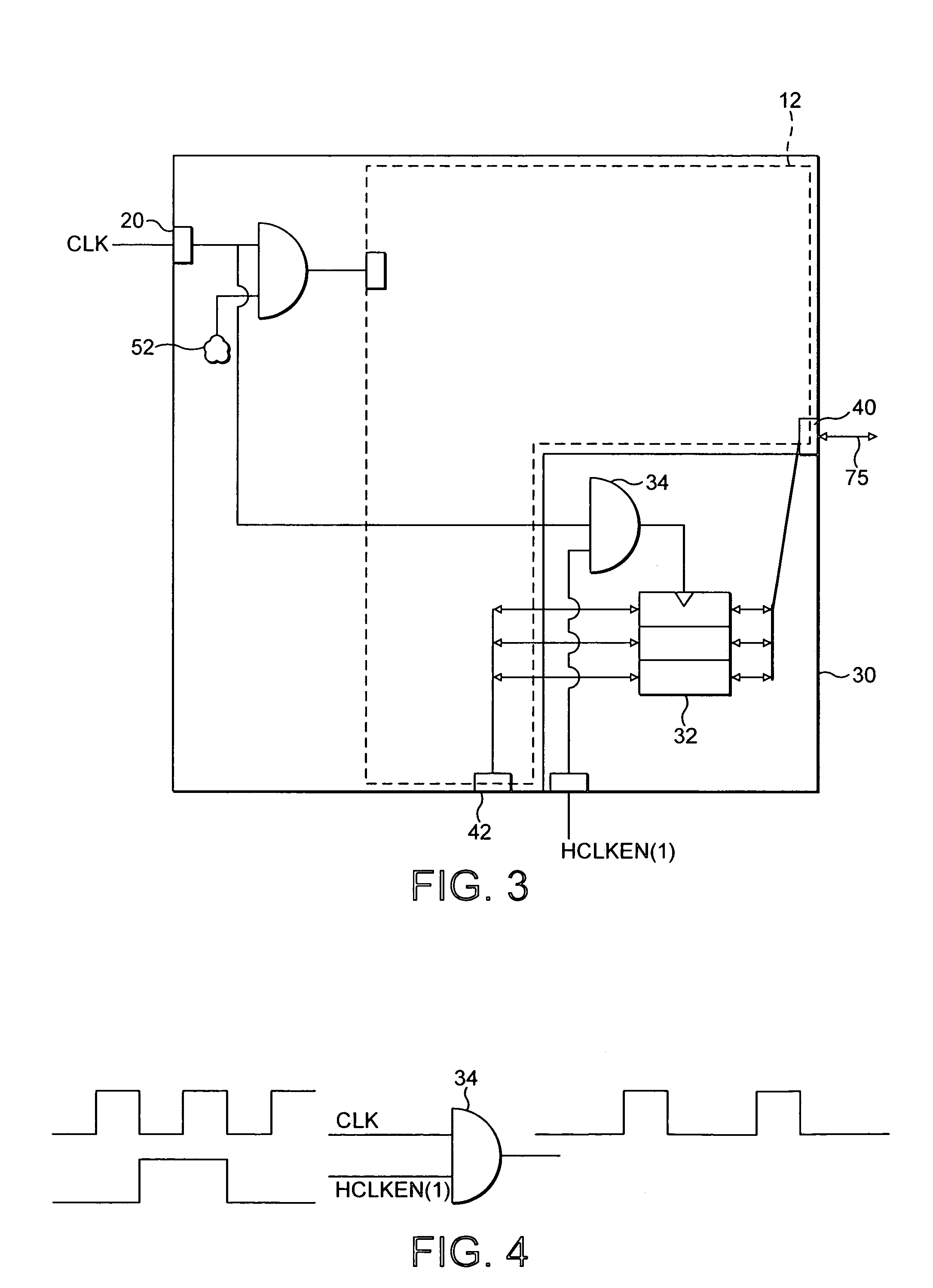Arbitration of data transfer requests
a data transfer request and data technology, applied in the field of data processing systems, can solve problems such as particularly acute problems, and achieve the effect of accelerating the transfer
- Summary
- Abstract
- Description
- Claims
- Application Information
AI Technical Summary
Benefits of technology
Problems solved by technology
Method used
Image
Examples
Embodiment Construction
[0032]FIG. 1 shows a processor core 10 which is divided into portions, one portion 12 being a standard data processing portion, and the other portion being a direct memory interface (DMA) 30. The processor core 10 has a clock signal input 20 for receiving a processor clocking signal CLK, and at least one read / write port 40 operable to be connected via a bus to memory associated with the core. The core may also have two further inputs a memory access enable signal input 60 for receiving a clock enable signal HCLKEN(1) and a processor enable input 50 for receiving a clock enable signal HCLKEN(2). In some embodiments the processor enable signal HCLKEN(2) is not received as an external signal, but is generated by processing logic within the core (see FIG. 3). The processing portion 12 of the core is clocked by the processor clock signal CLK when the HCLKEN(2) signal has a predetermined value in this embodiment when it is 1. When the HCLKEN(2) signal is 0 the processing portion does not ...
PUM
 Login to View More
Login to View More Abstract
Description
Claims
Application Information
 Login to View More
Login to View More - R&D
- Intellectual Property
- Life Sciences
- Materials
- Tech Scout
- Unparalleled Data Quality
- Higher Quality Content
- 60% Fewer Hallucinations
Browse by: Latest US Patents, China's latest patents, Technical Efficacy Thesaurus, Application Domain, Technology Topic, Popular Technical Reports.
© 2025 PatSnap. All rights reserved.Legal|Privacy policy|Modern Slavery Act Transparency Statement|Sitemap|About US| Contact US: help@patsnap.com



